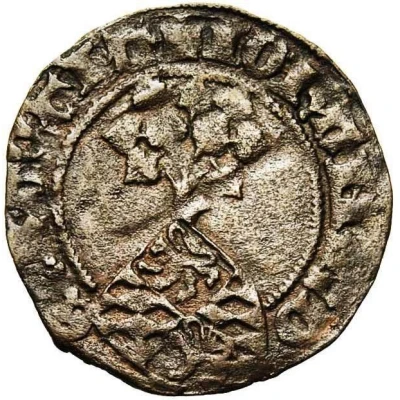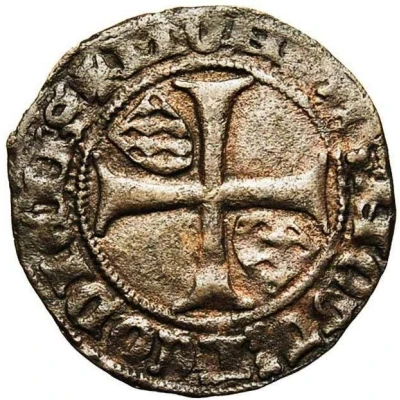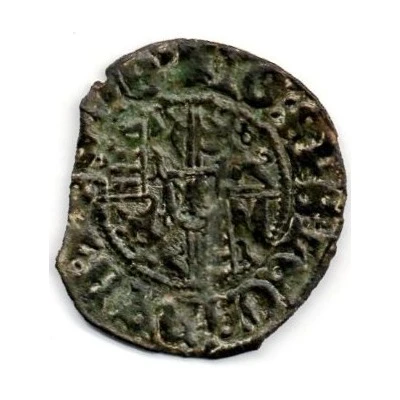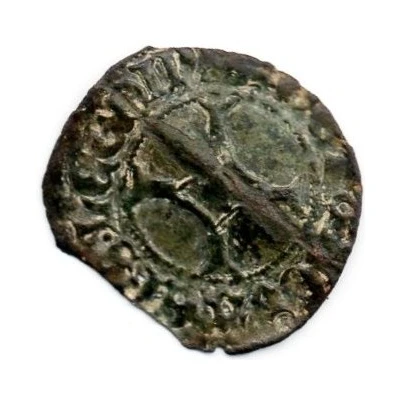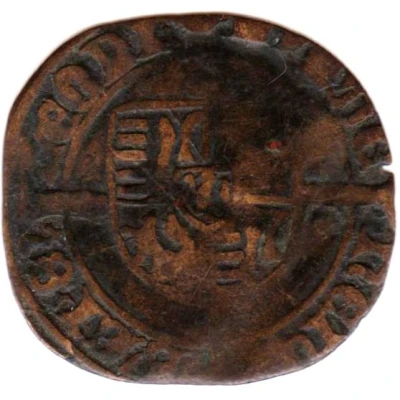
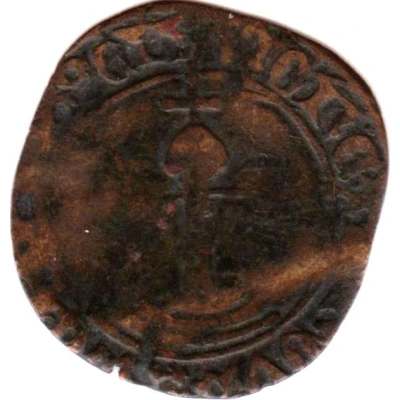

© JM
Grand Brûlé, perron - John of Heinsberg ND
| Billon | 1.3 g | 25 mm |
| Issuer | Prince-bishopric of Liege (Belgian States) |
|---|---|
| Prince-bishop | John of Heinsberg (1419-1455) |
| Type | Standard circulation coin |
| Years | 1419-1448 |
| Value | 1 Brûlé (1⁄24) |
| Currency | Gros (1274-1456) |
| Composition | Billon |
| Weight | 1.3 g |
| Diameter | 25 mm |
| Shape | Round (irregular) |
| Technique | Hammered |
| Orientation | Medal alignment ↑↑ |
| Demonetized | Yes |
| Updated | 2024-10-04 |
| Numista | N#330381 |
|---|---|
| Rarity index | 94% |
Reverse
The perron of Liege within inner circle
Script: Latin
Lettering: MONETA NOVA FACTA HA
Translation: New coinage made in Hasselt
Comment
This grand brûlé was hammered in Liège from 1419 to 1448. It was copied by numerous Mosan seigneuries. It's worth noting that the perron column is in one piece on the reverse of this coin. Since 1449, the Liège stoop has been depicted with a central ring. This is the result of the monument's restoration. On March 29, 1448 (a Good Friday), a major earthquake was felt twice in the morning between the 3rd and 4th hours between Liège and Bruges. It toppled the building and broke it in two (for some historians, it was a tornado that toppled the staircase). Subsequently, this element was made of stone for purely decorative purposes.Born in 1397 to Count Jean de Heinsberg and Marguerite de Genappe. He was Archdeacon of Hesbaye when, at the age of 23, he was elected Prince-Bishop of Liège on June 16, 1419. He was confirmed in office on September 10, 1419 by Pope Martin V. He took part in the crusade against the Hussites (Jean Hus, precursor of Protestantism) in 1420. On July 14, 1430, Jean de Heinsberg declared war on Philippe le Bon, Duke of Burgundy, who had bought the county of Namur. The castle of Poilvache (County of Namur) falls and is demolished. Philippe le Bon inherits Brabant and becomes Duke of Brabant and Limbourg. The principality of Liège was surrounded, and the prince-bishop signed an unfavorable peace (Treaty of Malines) on December 15, 1430. On March 31, 1455, Philip the Good forced the abdication of Jean de Heinsberg, as he wished to place a member of his family at the head of the principality of Liège. Pope Calixtus III conferred the episcopal see on Louis de Bourbon on March 30, 1456. Jean de Heinsberg died of pleurisy at the Château de Curange on October 18, 1459.
Interesting fact
One interesting fact about the Grand Brûlé coin is that it was minted during a time of great turmoil in the Prince-bishopric of Liege, which was a small state in what is now Belgium. The coin was issued by John of Heinsberg, who was the Prince-bishop of Liege from 1419 to 1448. During his reign, the region was facing economic and political challenges, including conflicts with neighboring states and the impact of the Hundred Years' War. Despite these challenges, the Grand Brûlé coin remained a popular form of currency in the region and is now a sought-after collector's item.
